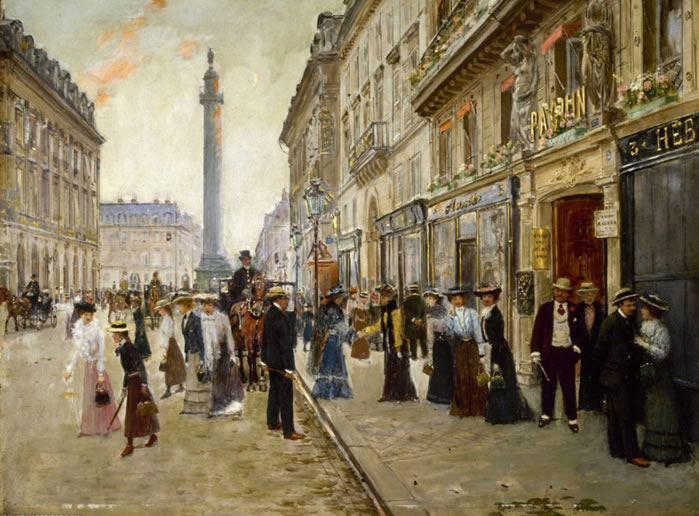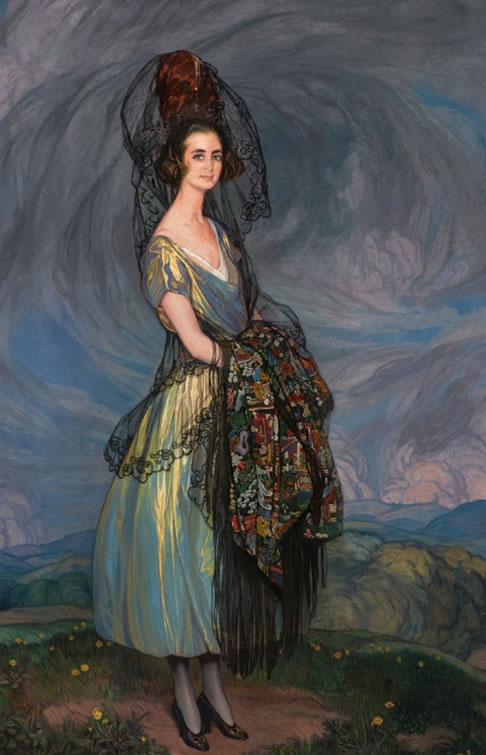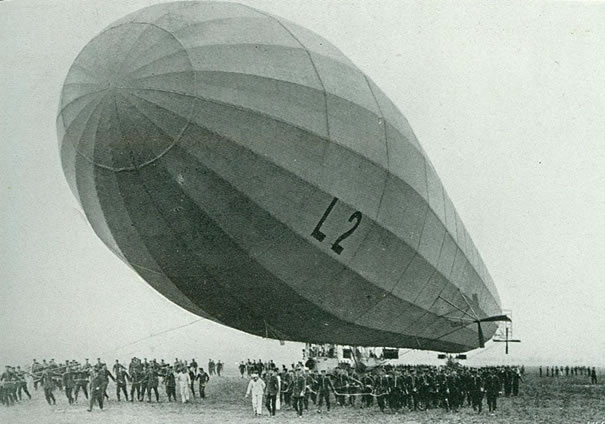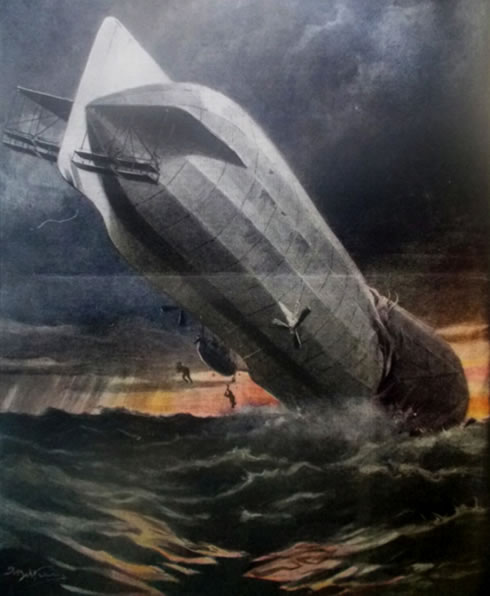Illusions of Magic Blog
Blog
August 2021
In this Issue:
Personal Note from J.B.
I have enjoyed a brief summer respite from writing on the blog. But here goes:
You will not find anything below about Energy Sufficiency, the Political Dichotomy, or Climate Change. Most of us find ourselves immersed in a sufficiency of that elsewhere.
The feature article of this blog is “Searching for the Duchess,” which suggests some of the adventures that I enjoy when researching background material for my novel-in-progress, Dead Heat to Destiny. The article also suggests some of the difficulty in fully understanding the intricacies of Spanish proper names, such as Joaquín Fernández de Córdoba Y Osma.
The second article below “The Twin Disasters—Before the Hindenburg” describes the two Zeppelin disasters of 1913 that might have indicated the futility of large hydrogen-filled aerial vehicles for transporting people. It too, evolved from my research.
I hope you enjoy my blog. Please take time to comment, about the website, the blog, or other topic. (Be sure to tell me who it’s from.) Simply send an email to feedback@illusionsofmagic.com.

Searching for the Duchess
Part of my novel-in-progress, Dead Heat to Destiny, features Adrien Boch’s career in the fashion world of Paris prior to World War I.
In 1913, she is on the staff of Jeanne Paquin’s fashion house at 3 Rue de la Paix. (Paquin, known for her ‘resolutely modern and innovative designs,’ was the first major female couturier—a pioneer of the modern fashion business.)

In this section of the novel, Adrien’s grasp of both the work and the managerial function has been rewarded with her being named “Le première d’Atelier de couture,”—responsible for managing the several hundred seamstresses at Maison Paquin.
But the need for conflict meant all could not be champagne and roses. Less than a month later, following the appearance of the latest issue of the preeminent fashion magazine Gazette du Bon Ton, Adrien is forced to recall a prior event in Paquin’s showroom.
I wrote the flashback of this event as an immediate scene in which Adrien agrees to add black silk chiffon to a Jeanne Paquin dress to obscure the pregnancy of a member of royalty.
Now I needed a member of royalty I could place at Maison Paquin who was also pregnant in 1913. As historical background for Adrien’s fashion activities, I had previously used records from the 2014 exhibit “Parisian chic from the Belle Epoque to the 1930s” at the Carnavalet Museum in Paris. These mentioned royals who were active buyers of fashions during that period, including Queens Marie of Romania and Victoria Eugenie, Princess Elizabeth of Romania, the Duchess de Gramont and the Duchess of Arión.
Princess Elizabeth of Romania was too young, and several of the others were too old for the scene in 1913. How old was the Duchess of Arión? I entered the search term “Duchess of Arión” into the Internet and was thrilled when the lead result was this wonderful portrait of the Duchess by Ignacio Zuloaga (1870-1945)!

But the current owner of the portrait, the Meadows Museum at SMU Dallas, failed to identify the Duchess. Nor did any of the Internet results using the search term “Duchess of Arión.” Frustrated, I next chose “Duke of Arión” as a search term. On Wikipedia’s list of Dukes of Arión, was the 8th Duke, Joaquín Fernández de Córdoba Y Osma, who held the position from 1870 to 1957. This was the correct Duke. Now I next needed to find out who his wife was.
Curiously, her name surfaced in a New York lawsuit between Inzer B. Wyatt and Logan Fulrath in 1965: María de la Luz Mariátegui y Pérez de Barradas.
The suit before the Court of Appeals concerned disposition of over $2million in New York joint accounts that had been sent there by the royal couple during their life together in Spain (he died in 1957, she in 1959).
It turned out that Marie was born in 1881, so she was 32 in 1913 and pregnant with her fifth child, Gonzalo Joaquin.
The Duchess of Arión was the perfect choice for my story!
The Twin Disasters—Before the Hindenburg
Most Americans have seen the newsreel clips and listened to the replay of Herbert Morrison’s eyewitness report for radio station WLS on May 6, 1937. Because of the heavy publicity attending the Zeppelin’s transatlantic passenger flight to the United States, there was massive press coverage of the flaming crash of the airship Hindenburg onto New Jersey soil that Thursday.
On the other hand, little is familiar and less has been released about two Zeppelin crashes that happened a quarter of a century earlier—both within a period of 38 days!
Had there been wide coverage by the world’s press of the second crash of these Zeppelins, it might have been a forewarning of the Hindenburg disaster. Because, on October 17, 1913, the gas of the Zeppelin L-2 ignited, the airship exploded in the air and burned. It crashed to the ground at Johannisthal, outside Berlin, resulting in the deaths of all on board.

Each Zeppelin was a cigar-shaped rigid airship of covered frame supporting internal gas cells. The first was designed by Ferdinand Graf von Zeppelin, a retired German Army officer. It made its initial flight in 1900.
L-2, designed to replace its lost predecessor, was similar in length (160 meters, 525 feet). It was designed and built at Friedrichshafen as LZ-18, but was to be armed and become the Imperial German Navy’s military reconnaissance/bomber craft. (The initials LZ, for Luftschiff Zeppelin, usually prefixed each Zeppelin’s serial identifier.)
Thousands were watching as the test flight of L-2 began at 10:30 a.m. According to several sources, it rose to about 300 meters above ground (estimates differ widely). A heavy detonation sounded, the craft was enveloped in flames, and it fell to a road near the airfield.
The ship, piloted by Captain Gluth, held 28 military men and crew.
According to one book* the test was the ship's tenth flight, which was to be an altitude trial. Takeoff on the morning of the 17th was delayed because one of the four engines failed to start. This caused a delay of two hours while the engine was repaired. Meanwhile, the morning sun heated the hydrogen, causing it to expand. This caused L-2 to ascend rapidly to 610 m (2,000 ft).
Flames leaped from the forward engine car, causing the explosion of some gasbags. Halfway to the ground a second explosion occurred. When the wreckage hit the ground further explosions were observed (perhaps fuel tanks). According to this source, three survivors were pulled from the blazing wreckage. Two of them died shortly, and a third died that night in hospital.
The Middelburgsche Courant, the oldest Zeeland newspaper, reported the next day, “flame was sighted coming out of the front engine gondola while [L-2] was at a height of 200 metres and immediately was she set on fire. Some explosions could be [heard] while the burning ship fell down. There were [no] survivors.”

Another source says all the men in the center gondola were expelled by the explosion and fell more than a thousand feet (horizontally) from the crash site, while one officer, Lieut. Baron von Bieul, was found alive on the ground, but died of his injuries.
Only 38 days earlier, September 9, 1913, the Zeppelin L-1 crashed into the sea about 18 miles north of the island of Heligoland in the North Sea. The crash occurred while the airship was performing aerial reconnaissance during war maneuvers coordinated by the German Imperial Navy. The airship flew into a rainstorm, where the cold rain caused its hydrogen to contract, which in turn caused it to fall to the sea and break into two segments.
The New York Times of September 9th reported the craft as flying at a height of between 4,200 and 5,000 feet, when it encountered, in the report’s florid style, “a hurricane,” which “came on so suddenly that it was impossible for the commander to make a landing.” The crew saw the danger and sent “a wireless message asking for help and indicating the intention of landing on the water...” whereupon “[t]orpedo boats rushed to the assistance of the airship...[m]ost of the officers remained in the cabin [sic]...and...were crushed under by the weight of the craft,,,[o]thers in the gondolas jumped into the water and some of them were rescued.”
The Middelburgsche Courant on September 10th reported L-1 flying at 1,700 metres when “a heavy wind” and rain caused the gas to be “squeezed,” resulting in a rapid descent and crash into the North Sea. When six torpedo boats arrived, “the airship was completely wrecked.” Only seven men were rescued. In its issue of September 11, it reported the craft “hit the sea surface and broke immediately in two parts,” as is suggested by the artist’s painting shown here.
Wikipedia reports that 13 (others say 14) of those on board L-1 drowned, bringing to 41 the number of deaths resulting from the two Zeppelin disasters of 1913, more than were lost in the flaming crash of the Hindenburg in 1937.
Ultimately, aerial transportation of people on huge containers of hydrogen gas was abandoned. Had those in charge of producing the intervening hundreds of Zeppelins fully considered the risk of this technology, the Hindenburg disaster might have been averted.
*Robinson, Douglas H. (1971), Zeppelin in Combat: History of the German Naval Airship Division, 1912-18.
Thanks
Tell your friends to visit this website—they’re sure to find something of interest!